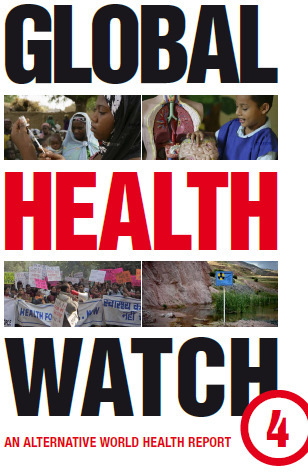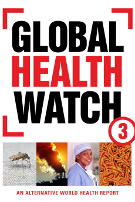11.3 Proposed programme budget 2014–2015
Key document
- Proposed programme budget 2014–2015 (EB132/27)
PHM comment pre-EB
The document lacks transparency. It simply provides the broad allocation of resources under various subheads within six categories. However, it does not provide any details of the proposed allocation of resources in various activities falling under each subheading. For instance, the subheading termed ‘access to medical products and strengthening regulatory capacity’ does not provide any details of the resource allocation for activities falling within this category. There are 7 subdivisions within the department of Essential Medicine and Health Product viz. medicine evidence and information policy, medicine access and rational use, traditional and complementary medicine, health products, medicine program coordination, quality and safety of medicine and prequalification of the medicine. However, the budget document does not provide information regarding the specific allocation of resources in each of the above-mentioned activities (except for a footnote which states that the budget includes WHO/UN programme on prequalification of Medicines).
Further, the proposed program and budget does not show the proposed allocation of resources form the assessed and voluntary contributions. In contrast the the program and budged document for 2010 -2011 clearly shows the allocation of resources form assessed and voluntary contributions under each category.
Further, many of the baselines as well as targets/indicators are yet to be finalized, including outcome indicators for social determinants of health.
Report of EB discussion
This overwhelming session started with the resume of the discussion held during the session of the Programme, Budget and Administration Committee (PBAC) by the chair of the PBAC. He welcomed the progresses made in developing the Draft Twelfth General Programme of Work (GPW) and the proposed Programme Budget 2014-2015 (PB), both of them intended as tools for implementing the reform, and recommended to take into account the comments that Member States (MS) will made through the online consultation that will be closed on February 15th.
The Director General (DG) replayed that both the GPW and the PB have to be intended as work in progress due to the ongoing nature of the reform process.
During the lively discussion all MS expressed their support to the proposal of approving the entire PB during the World Health Assembly (WHA) and their willingness to participate in the online consultation that will provide further inputs to the process.
MS raised many issues and concerns about the procedure that has led to elaborate the two documents under discussion.
The first concern, expressed by several European countries, was about the methodology the Secretariat and the DG utilized to identify the strategic priorities and the relation between these priorities and the categories identified in the previous stage.
On the same topic, the USA highlighted the mismatched inclusion into the strategic priorities of both technical and cross-cutting issues (such as Universal Health Coverage).
Another general perception was that further work needs to be done on the result chain: indeed many targets/indicators are to be finalized (the most cited example was the social determinants of health section mentioned by China, Canada and the USA) while others are still missing such as those related to human rights, gender and environmental factors. At the same time, several Member States asked for the inclusion in the GPW of further items that, according to their country situation, are currently missing such as social protection, disability, human health security and neglected zoonotic diseases.
Moving from the considerations on the GPW to those related to the PB, many words were spent on the allocation of resources among the different WHO regions. In particular MS of the SEARO expressed their great concern about the decreasing of the budget assigned to their region that, according to them, won’t to cover the needs of the countries and won’t be sufficient to properly fund WHO technical support to local governments. The risk of wasting the results achieved in polio eradication was mentioned by India as a possible consequence of cost cutting upon this region.
The point of regional resource allocation was raised also by Mexico and Ecuador: they called for more clarity and transparency in this process. On the other hand, Croatia backed by Morocco and Azerbaijan, outlined the importance for regional specificities to be reflected in the PB.
The importance of guaranteeing the flexibility of funds was another matter of discussion: MS requested to find a balance between the authority of the DG in reallocating funds and the role of Governing Bodies in deciding upon that.
While taking the floor, almost all MS asked for clarification on the new financial model, the so called “financing dialogue” and the role that the Governing Bodies will have in this process in terms of participation and orientation.
Before the response of the Secretariat and the DG, three NGOs read out their statements, between them Medicus Mundi International and the People’s Health Movement, both members of the Democratising Global Health coalition (see the statement at the link: http://www.ghwatch.org/sites/www.ghwatch.org/files/EB%20132_PHM%20statement_WHO%20reform_GPW%20PB.pdf)
At the end of this intense discussion the DG took the floor to address the concerns and the questions posed by MS. She thanked all MS, non-EB MS and civil society for their inputs and highlighted the convergence between the present discussion and the one held during the PBAC. Recognizing that changes cannot happen overnight and therefore more work is needed, she reassured that WHO will continues working on that.
She summarized the debate in the following points:
(1) GPW: Member States asked for better explanation on the process that led to the identification of the strategic priorities through the application of categories and criteria for priority setting. Six of them refer to technical priorities (MS suggested to rename them “programmatic or leadership priorities”) while other two are linked to the reform process. Dr Chan assured that, after receiving the inputs from MS through an online consultation, the Secretariat will elaborate a new draft of the GPW in which the two “reform priorities” will be in one chapter and the “programmatic priorities” in another one.
(2) PB 2014-2015: the Secretariat will better articulate the results chain and will work on the development of agreed indicators as asked by several MS.
Trying to address MS requests for clarification on costs, Dr Chan said that at this point in time is difficult but the Secretariat will provide more costs information on staff and activities based on expenditure patterns.
Concerning the allocation of resources among different WHO regions she assured that she will work on that issue with the regional DG and that the allocation will be linked to monitoring and evaluation through an accountability mechanism.
(3) concerning the financing dialogue, the DG provided several details on how this process will work (see table below).
|
First meeting |
Second meeting |
|
| OBJECTIVES | Provide inforomations on resource requirements, secured fundings and funding gaps. |
structured dialogue with MS and contributors to identify solutions to address remaining funding gaps |
| TIME | One day meeting on June or July | Two-day meeting, October or November |
| VENUE | EB room | CICG Geneva |
| PARTICIPATION | WHO MS and current major financial contributors to WHO |
WHO MS and current major financial contributors to WHO |
| METHODS OF WORK | chair could be the chair of PBAC or vice-chair of PBAC (this represents the GB engagement and they will report to the EB); it will be an informal consultation | chair could be the chair of PBAC or vice-chair of PBAC; informal consultation |
| COST IN ORGANIZATION OF MEETING | 300.000 USD (for translation and travel for LMICs) |
350.000 USD |
| EXPECTED OUTOCOMES | assessment of current status of funding of PB 2014-2015 and resource requirem | update of status of financing of PB 2014-2015; identification of funding gaps and concrete actions to reduce financial gaps; approach/proposals for resources mobilization to address the financial gaps; information on proposed allocation of AC. |
The following discussion focused on the timing, modalities (on line or face-to face) and outcomes of the first meeting of the financing dialogue.
After a long debate, it was decided that if the 66th WHA approves the financing dialogue, the first meeting will be virtually held through an online document sharing on a website that will be accessible for both MS and major contributors to WHO (Chan mentioned the Bill Gates Foundation and the Rockfeller Foundations) and after that WHO will organize briefings on the Missions. The second meeting will be a face to face one and will be organized in October or November 2013.
PHM comment post-EB
Watch this space
Other reports and commentaries
Watch this space




